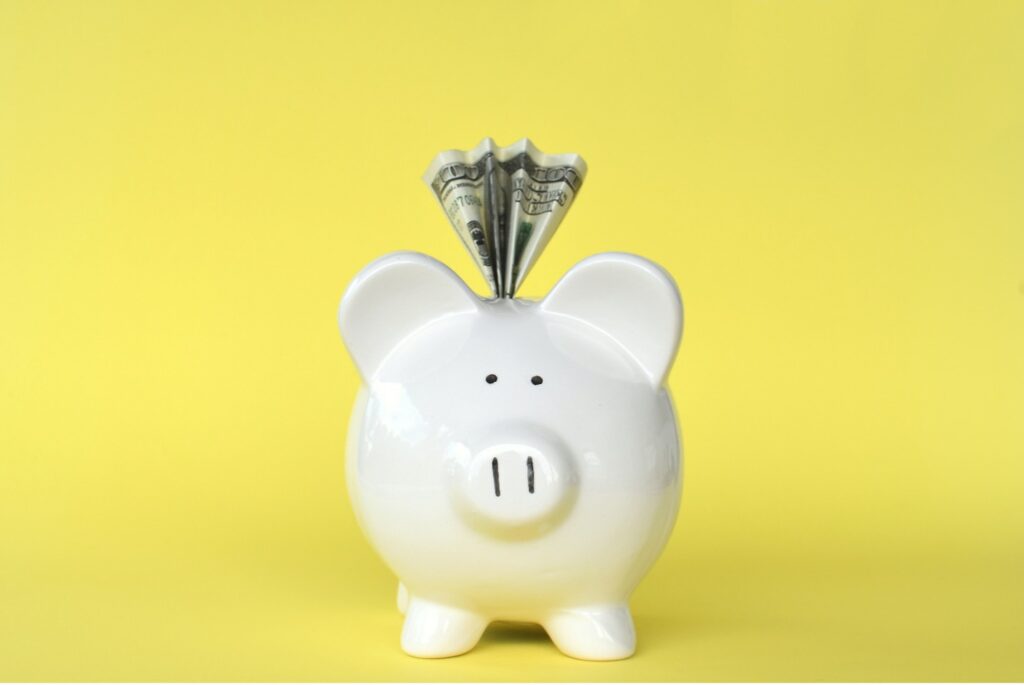Rapid prototyping cost factors can determine whether RP suits your project. Learn how much rapid prototyping costs to create a budget that makes sense. Then work with a provider that can help you reduce expenses without sacrificing quality. Here’s how.
Rapid prototyping cost factors can make or break your project. Most manufacturers work with a budget to ensure streamlined processing and efficient production. They can’t afford to waste money on unnecessary processes that fudge lead times or reduce quality.
Maintaining a competitive edge requires fast manufacturing techniques aligned with the latest ISO standards. Each industry obeys different regulations, making innovation a challenge. However, the surprising rapid prototyping cost could help some product developers charge ahead.
How much does rapid prototyping cost, and is it worth the money? Can manufacturers skip the RP process and go straight to mass production? What risks do they assume when neglecting due diligence? Here is what you need to know.
Table of Contents
Rapid Prototyping Cost: An Overview
How Much Does Rapid Prototyping Cost?
What Are the Advantages of Rapid Prototyping?
Factors That Affect the Cost of Rapid Prototyping
How to Reduce Your Rapid Prototyping Cost
Prep Tips for Rapid Prototyping
Rapid Prototyping Cost: An Overview
Rapid prototyping costs far less than the price of avoidable mistakes.
Creating three-dimensional representations of various products helps designers catch problems before manufacturing. This step helps reduce waste and shorten lead times, streamlining development and eliminating unnecessary spending.
Project managers must invest in RP upfront, but their overall expenses get slashed. The reason is that the rapid prototyping cost includes experimentation and troubleshooting. Experts spend a fraction of their manufacturing budget by first perfecting the design with RP processing.
Rapid prototyping involves a series of techniques you can customize at any time. Use the amenity during early production to smooth out design flaws. Or integrate RP into end-use examinations to ensure maximum efficacy. Test parts, assemblies, and inventions before introducing them to investors, consumers, or executives.
Rapid prototyping helps maintain industry standards while allowing for flexibility and frugality.
The cost of neglecting due diligence could be more than expected. Most brands want consistency and reliability regardless of the product complexities.

We offer fast, high-quality, tailored PROTOTYPING solutions for leading companies in a wide range of industries.
superior Rapid PROTOTYPING
How Much Does Rapid Prototyping Cost?
The rapid prototyping costs you can expect will depend on several factors. For example, complex geometries might require more comprehensive processing. This variation is particularly accurate for projects with multiple design flaws or needing last-minute adjustments.
Simple designs could require less processing, but that’s not always the case. Rapid prototyping uses various techniques and CAD software to fabricate a scale model before 3D printing or machining. You could still encounter costly setbacks with outdated equipment, improperly trained staff, or wasteful practices.
There is no average rapid prototyping cost because prices can vary widely.
The ticket can range from $100 to over $100,000, depending on the design, materials, and timeline.
Speak to your team to calculate the budget, and then define your exact place in the process to determine whether RP makes sense.
QUESTION: Are you just now creating a concept, or are you ready with a full-fledged design?
What Are the Advantages of Rapid Prototyping?
Rapid prototyping provides countless advantages to product development teams and manufacturers. The process is particularly beneficial before 3D printing. When paired with RP, additive manufacturing can help streamline production, cut costs, and maintain standards for various industries.
There are several other pros to prototyping before production, including:
- Big Picture Building – Demonstrate innovations and functionality during the earliest design and manufacturing stages. Use rapid prototyping to change elements or improve features while you have the chance.
- Staff Consolidation – Train and pay fewer workers to produce prototypes and models. The rapid prototyping cost includes automation to reduce human error and labor expenses.
- Enhanced Precision – Rapid prototyping costs can be relatively high because of the unmatched accuracy. Find creative ways to save money without sacrificing quality.
- Reduced Tooling – RP doesn’t require special tools for each new design. Computer-aided processing means cost-cutting versatility across multiple applications.
- Brilliant Presentations – Use rapid prototyping cost benefits to show new concepts to the people in charge. Capture the attention of suppliers, supporters, investors, and clients with visual RP.
- Intuitive Demonstrations – Help people see the value of your parts and assemblies with timely rapid prototyping. Get feedback in the early stages to incorporate requested elements.
- Quality Testing – Refine your design through diligent testing to meet or exceed industry standards. Use the affording rapid prototyping cost to invest elsewhere.
For many manufacturers, a rapid prototyping cost analysis is essential. Different project features and requirements could alter the final price of RP. Determine if the process is worth your time and money by speaking to an expert. Then compare their capabilities with your timeline, goals, and budget.
Factors That Affect the Cost of Rapid Prototyping
The cost of rapid prototyping may vary, but the benefits never change.
As industries adopt the RP process for more efficient manufacturing, economies will shift in tandem.
Sectors offering more affordable products could become the latest icons. Meanwhile, those using rapid prototyping to reduce waste might enjoy more eco-consumer loyalty.
Understanding the process and benefits is only the beginning. You must also consider the factors that can affect the price of rapid prototyping services. Here is what to factor into the equation:
#1. Product Type
The kind of object you’re trying to create can determine the final rapid prototyping cost. Complex designs and concepts with multiple flaws may require more processing. Also, some industries impose strict regulations on manufacturing and innovation. RP helps keep everything straight at an affordable price.
#2. Readiness
Your preparedness for prototyping can impact the price tag. If you’re not ready with a workable design, staff will have to help create one. Their extra labor could cost more and push back the schedule if issues arise. It’s better to be prepared for RP and all its costs, regardless of your aspirations.
#3. Prototype Purpose
How will you use the scale model, and what do you want to avoid? Functional prototypes could cost more than simple mock-ups for demonstration. Find ways to cut your rapid prototyping cost elsewhere. Then enjoy a precise outcome that serves its primary purpose.
#4. Order Volume
Size always matters in manufacturing. Individual product models might not cost very much. However, massive orders can significantly alter the budget. Large-scale prototypes are also more expensive because they use more materials. Consider volume to calculate accurately.
#5. Material List
High-quality materials usually sell for more than low-end textiles. Also, materials requiring import or export can increase the rapid prototyping cost. Another increase could come from working with hard or soft ingredients. Creating specific designs with advanced technology or sensitive elements also means more money.
#6. Surface Finish
Does your prototype need finishing before a presentation? Some models don’t require this extra step. However, those that do will incur a more significant price tag for the additional services. The average rapid prototyping cost does not include post-manufacturing processes like metal finishing and coating.
#7. Post-Manufacturing
Your design might require other post-manufacturing processes, and many experts can oblige. Still, they must charge for the enhancements. Determine how simple or complex your outcome should be to reduce the price efficiently. Then compare your plans to the industry ISO regulating your design.
Paying the standard rapid prototyping cost will likely not break the bank.
However, working with an inefficient team could be more expensive than necessary. Define your goals, communicate the objectives, and trust a company with a reputation for quality RP. Look for providers with established partnerships and a loyal following.
DID YOU KNOW: NASA commissioned students to help invent a revolutionary product for enhancing space exploration.

We offer fast, high-quality, tailored PROTOTYPING solutions for leading companies in a wide range of industries.
superior Rapid PROTOTYPING
How to Reduce Your Rapid Prototyping Cost
Reducing your rapid prototyping cost can help allocate more resources for future innovations. It can also ensure optimal quality while maintaining a tight schedule. Regardless of your design complexity or manufacturing goals, cost-effective RP is available. You only need the right tactics and a hands-on service provider.
Determine the best approach for your project by considering factors other than the price. These clever cost-cutting techniques could also help you stay on track:
- Use Compatible Material Alternatives – If the final design calls for a specific metal, choose something less expensive for the mock-up.
- Plan the Prototype – Have your product design and any acceptable alterations ready to share. Then create a designated channel for communication.
- Know Industry ISO – Understand the regulatory limitations to ensure successful testing phases and grade-A outcomes.
- Order Small Batches – Create low-volume orders to take advantage of shifting economic conditions and supply chain situations.
- Keep Flexible Timelines – Save money when you don’t expedite rapid prototyping orders. This tactic helps track progress, catch mistakes, and expose competitor weaknesses.
- Limit Post-Manufacturing – Eliminate unnecessary processing after manufacturing a prototype. Try to incorporate the missing elements into your final design.
- Get an Estimate – Prepare for the rapid prototyping cost by getting a pre-service quote. Experts can help decide which phases to add, subtract, multiply, or divide.
Remember, there is no average rapid prototyping cost because several factors are at play. You can’t always predict how much RP will cost. Various elements and industry requirements can impact your price tag, so find a team with an intuitive approach or money-saving suggestions.
Rapid prototyping should help reveal design flaws for early-stage repairs and enhancements. Those advantages can boost industry relevance, increase sales, and eliminate manufacturing waste. Use RP to perfect your inventory without going broke.
Prep Tips for Rapid Prototyping
Preparing for the rapid prototyping process can help you stay on track and accomplish goals.
Being ready for RP can also reduce lead times and eliminate unnecessary expenditures. Stay diligent despite automation and excellent customer service to avoid busting the budget. You can always make adjustments as you go.
Create a flexible timeline, and then discuss budgetary expectations with your team. Determine if there are alternative materials you can use or steps you can follow to cut costs even more. Some companies offer incentives for large-scale or small-scale projects, advanced orders, and exciting design opportunities. Speak to an expert first.
Get ready to discuss the rapid prototyping cost for your project. Many businesses offer free quotes or price estimates for each phase. You can calculate various expenses and eliminate specific processes. This prep step can help make more room in the budget for unexpected events.
Use your resources wisely, and don’t forget to ask questions. Your team should include product developers, programmers, engineers, and machine operators. Each member plays a critical role, so focus on communication to enjoy seamless innovation. The best crews will discuss the details during every phase.
DID YOU KNOW: Rapid prototyping preparation involves multiple steps, but your team can tailor them to suit your objectives.
Conclusion
Rapid prototyping cost factors can vary depending on the project. However, many product developers consider RP an essential step to efficient manufacturing. Teams could miss critical design flaws or money-saving opportunities without rapid prototyping services. Advanced technologies ensure high standards across multiple industries.
Determining the cost of fast manufacturing can be somewhat confusing. You must understand the need for different requirements and limitations. This is a simple question with a complicated answer ranging from $100 to several hundred thousand. There is also no average rapid prototyping cost because of the various factors involved.
Expect to spend what the design complexities, functionality, and industry criteria require. Neglect due diligence and risk falling behind the competition. Consider the materials, timelines, post-manufacturing needs, and prototype purpose to closely manage the budget.
Is the rapid prototyping cost worth it? It depends on whether you’re concerned about price, waste, or efficiency. Most manufacturers want to reduce unnecessary spending, so they use RP to eliminate concerns before mass production. Work with a rapid prototyping company that can walk you through the options and maintains your financial plan.
 About the Author
About the Author
James Murphy is the founder and CEO of HLH Rapid – a hybrid CNC machine shop fusing Western service and quality with Eurasian industry influences for over 14 years. His advanced enterprise uncovers cost-effective rapid injection molding techniques to remain unmatched by industry competitors. Murphy’s full-service fabrication and manufacturing methods span six dedicated zones, from 3D printing and vacuum casting to sheet metal prototyping and project management. His expertise also includes high-efficiency machining within strict yet volatile markets.
Murphy earned an MBA after becoming inspired by his father’s hands-on craftsmanship. As a budding entrepreneur, he taught English and studied Chinese to pursue pioneering objectives. His groundbreaking approach helps build the future by providing well-rounded manufacturing services to innovative Western businesses. When he’s not offering upscale RP and CNC, James enjoys art-house movies, Thai boxing, and spending time with his growing family.


